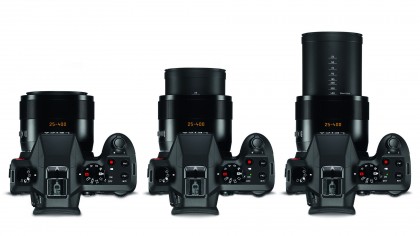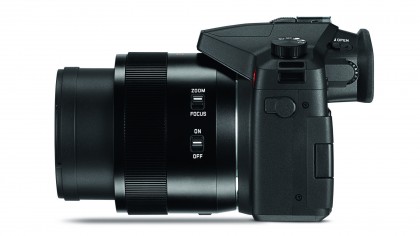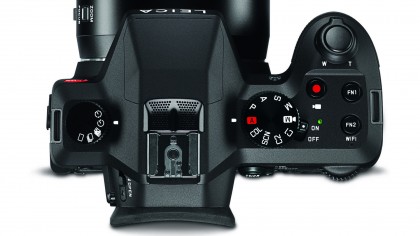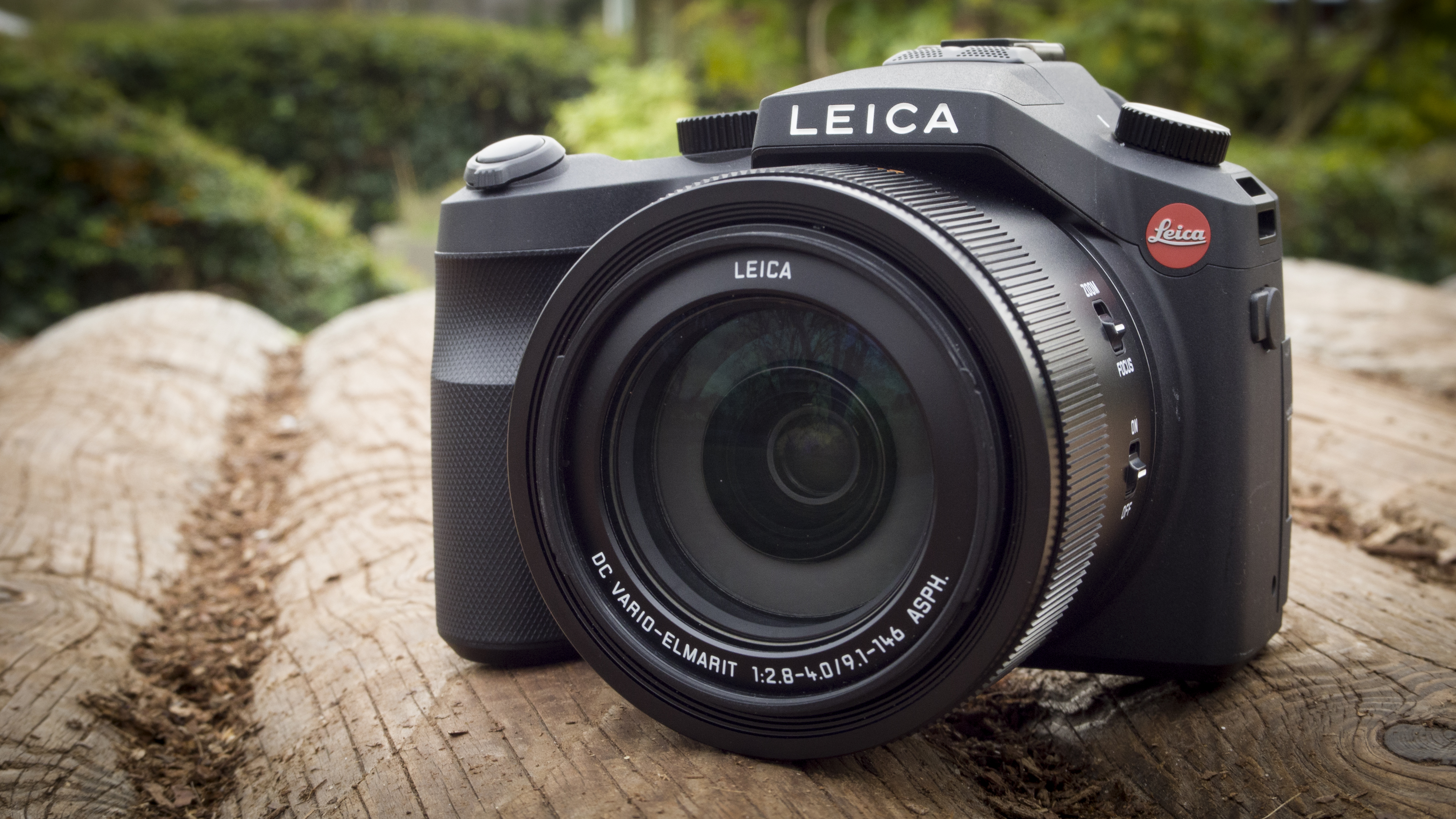Why you can trust TechRadar
Bridge cameras have grown in size in recent years, perhaps to convey a greater sense of gravitas, but the V-Lux (Typ 114) is one of the larger models around. Like the Panasonic FZ1000, it's a little larger than the Sony RX10, but it also has a much longer lens (albeit with a smaller maximum aperture at longer focal lengths). Neither the FZ1000 nor the V-Lux have quite the same high quality feel as the RX10.

Although the V-Lux is reasonably solid for a bridge camera and is very similar in appearance to the FZ100, there are a few design touches that make it feel a little different in the hand. The Leica camera is just a tad more angular in appearance than the Panasonic camera and instead of the bottom edges being rounded, they are chamfered. It isn't a major issue, but this makes the camera a little less comfortable in the hand.
The textured coatings on the front and rear grips of the Leica camera also aren't quite as grippy as on the Panasonic model. Plus, the coating on the back doesn't extend quite so far around the thumb-ridge and this makes the camera feel a little less secure in the hand.
There are no changes to the control layout, however, and the V-Lux has a fairly extensive collection of buttons and dials giving a direct route to key features.
There's a mode dial on top of the camera that can be used to set the camera to shoot in aperture priority, shutter priority or manual exposure mode, or one of the Automatic or Scene modes. The point marked COL gives access to Creative Control mode and the 22 digital filter effects, including Sepia, High Dynamic, Toy Pop, Rough Monochrome, Soft Focus and Miniature Effect.
Like the FZ1000, there's a deep zoom ring around the lens barrel, but it isn't always convenient to use it to zoom from 25 to 400mm. Instead, I found that I often used the sprung switch around the shutter release to make major adjustments, while the ring is handy for minor tweaks to the framing.

This ring can also be used to focus manually and there's a switch on the side of the barrel that allows you to switch between zooming and focusing. I found that there were very few occasions when I needed to focus manually because the autofocus system is very good, but Leica enthusiasts may feel more comfortable with manual focus. If they do, as well as the Focus Peaking display, the camera can be set to magnify a section of the scene to make it easier to assess focus.
I found that the 2,359,000-dot OLED electronic viewfinder (EVF) gives a good, clear view and changes made to the exposure or colour settings are quickly reflected in the image it displays. The rear screen, which has 921,000 dots also gives a clear, detailed view and its articulating joint means it is useful for composing images at above or below head-height. It's a shame the screen isn't touch-sensitive though as this would make it much easier to set the AF point, especially when shooting from awkward angles.
The electronic level which can be displayed in the EVF and rear screen is especially useful when shooting from unusual angles and you need to keep the horizon level, but it can be tricky to see on the screen in some situations – especially in bright conditions.
By default in 1-Area AF mode the desired point is set by tapping the left navigation key to access the AF point selection options, tapping the down key and then using the navigation controls to highlight the point. I activated the Direct Focus Area option in the custom menu to speed the process up by allowing the navigation keys to set the AF point directly. Unfortunately this means that their shortcut options (ISO, white balance and macro mode) are not accessible, but they can be reached via the Quick Menu.
The Quick Menu can be left in its default set-up or customised. I prefer to customise it so that I can access the options I want without having to scroll through features I rarely use. The customisation is easy, but once features have been assigned a position in this menu, the only way to reposition them is to delete them from it and then add them again.
Conveniently, there are a few options such as the drive mode and focus mode that can be set via dials and without delving into either the main or Quick menu. This speeds things up considerably. I also found it useful to set the Custom shooting modes (accessed via the mode dial) so that I could quickly switch between my preferred set-ups. You just need to remember that any features that need to be set via dials (such as the drive mode) will not be changed.

Leica has used the same menu arrangement for the V-Lux as Panasonic has for the FZ1000, but rather than highlighting the selected option, it is underlined in red. There's also the same Menu Guide with it's rather variable degree of assistance. For example, if you try to access the HDR (high dynamic range) feature when recording raw files (or raw and JPEG files simultaneously) it shows the option as greyed out. There's no explanation that this is a JPEG-only option and that to access it you first need to turn off raw recording. It also doesn't explain why you might select features like the electronic or mechanical shutter (maximum shutter speed rises to 1/16000sec with the electronic shutter), it just informs you which option will be selected by each setting. It's not so much helping you decide what to do, as confirming that you are doing what you are doing.
